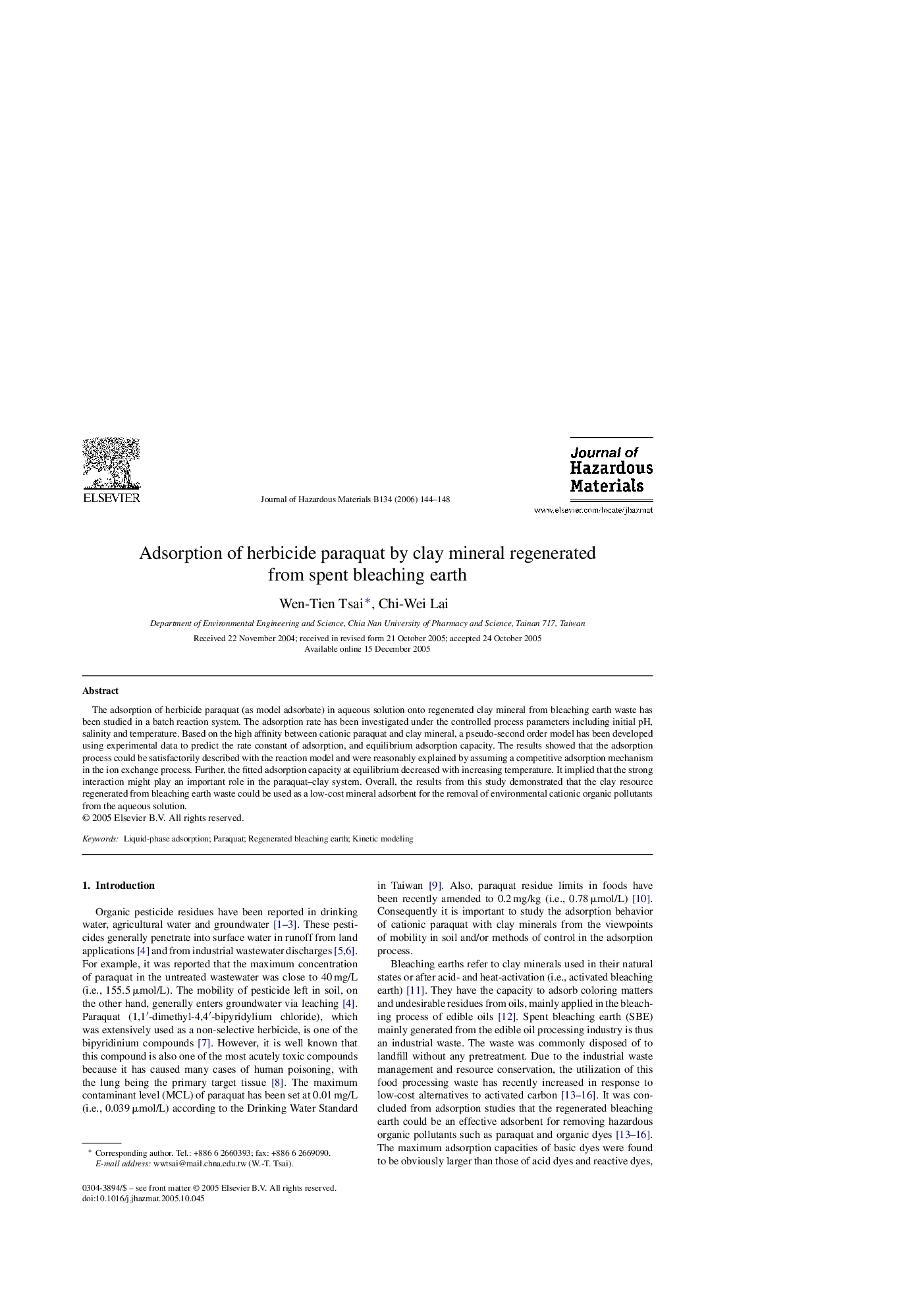| Article ID | Journal | Published Year | Pages | File Type |
|---|---|---|---|---|
| 585258 | Journal of Hazardous Materials | 2006 | 5 Pages |
Abstract
The adsorption of herbicide paraquat (as model adsorbate) in aqueous solution onto regenerated clay mineral from bleaching earth waste has been studied in a batch reaction system. The adsorption rate has been investigated under the controlled process parameters including initial pH, salinity and temperature. Based on the high affinity between cationic paraquat and clay mineral, a pseudo-second order model has been developed using experimental data to predict the rate constant of adsorption, and equilibrium adsorption capacity. The results showed that the adsorption process could be satisfactorily described with the reaction model and were reasonably explained by assuming a competitive adsorption mechanism in the ion exchange process. Further, the fitted adsorption capacity at equilibrium decreased with increasing temperature. It implied that the strong interaction might play an important role in the paraquat-clay system. Overall, the results from this study demonstrated that the clay resource regenerated from bleaching earth waste could be used as a low-cost mineral adsorbent for the removal of environmental cationic organic pollutants from the aqueous solution.
Related Topics
Physical Sciences and Engineering
Chemical Engineering
Chemical Health and Safety
Authors
Wen-Tien Tsai, Chi-Wei Lai,
